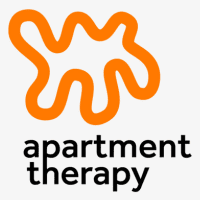Table of Contents
Understanding Online IOPs for Teens
When a teen is struggling with anxiety, depression, or other mental health challenges, parents often face an overwhelming question: what level of care is best? An Intensive Outpatient Program (IOP) offers structured support several days per week — but unlike inpatient or residential care, the teen continues living at home.
Thanks to telehealth, options like an online youth IOP make it possible for teens to receive intensive therapy and consistent support without leaving home. For many teens, this model provides real therapeutic progress while maintaining school, friendships, and everyday routines.
What Is an Intensive Outpatient Program (IOP)?
An IOP sits in the middle of the mental health care continuum — more structured than weekly therapy, but less intensive than residential treatment.
Typical structure:
- 3–5 therapy sessions per week
- 2–3 hours per day
- Combination of individual therapy, group sessions, and family counseling
- Focus on coping skills, emotional regulation, and relapse prevention
According to the American Academy of Child and Adolescent Psychiatry, IOPs are often recommended when weekly outpatient therapy isn’t enough, but 24-hour care isn’t necessary.
How an Online IOP Works

A virtual IOP delivers the same core components as an in-person program — just through a secure telehealth platform. Teens log in for scheduled sessions from home, often using video conferencing software designed for HIPAA compliance.
A typical week might include:
- Group therapy: Building peer support and communication skills
- Individual therapy: Personalized sessions to address anxiety, mood, or trauma
- Family sessions: Helping parents learn supportive responses and boundaries
- Psychoeducation: Understanding mental health, triggers, and resilience
Online programs often use interactive tools — like digital journals, worksheets, and skill trackers — to keep teens engaged between sessions.
Who Benefits from Online IOPs?
Virtual IOPs are most effective for teens who:
- Need structured support but are safe to remain at home
- Struggle with depression, anxiety, school avoidance, or mild substance use
- Respond well to digital environments and open communication
- Have reliable technology and privacy for sessions
For teens in acute crisis (e.g., suicidal intent, self-harm behaviors, or psychosis), in-person or inpatient care remains the safer option. Online IOPs are not emergency services but can play a powerful role in recovery once safety is established.
Benefits of Online IOPs
Parents often worry that online care may feel “less real,” but research shows that telehealth therapy can be equally effective for many adolescents, especially in cognitive behavioral and family therapy formats.
Key advantages include:
- Accessibility: Families in rural areas or with limited transportation can join without commute barriers.
- Continuity of care: Teens can keep attending school and social activities.
- Family inclusion: Parents can easily join sessions and apply strategies at home.
- Comfort of home: Many teens open up more easily in familiar environments.
- Flexible scheduling: Reduces disruption to academic and family routines.
A 2023 meta-analysis in JMIR Mental Health found comparable treatment outcomes for telehealth IOPs versus in-person care, particularly for depressive and anxiety disorders.
Challenges to Be Aware Of
Online IOPs aren’t the right fit for every family. Common challenges include:
- Distractions at home: Privacy and focus can be harder to maintain.
- Screen fatigue: Extended virtual sessions can tire some teens.
- Technology issues: Reliable internet and quiet space are essential.
- Reduced physical observation: Clinicians can’t monitor nonverbal cues as easily.
Programs often mitigate these issues with clear guidelines, pre-session check-ins, and caregiver support plans.
Comparing Online and In-Person IOPs
| Feature | Online IOP | In-Person IOP |
| Environment | Home setting via telehealth | Structured clinical setting |
| Flexibility | High — easier scheduling | Moderate — travel required |
| Social interaction | Virtual peer groups | Face-to-face community |
| Clinical observation | Limited visual cues | Full in-person visibility |
| Accessibility | Ideal for remote areas | Dependent on proximity |
| Privacy needs | Requires quiet space | Privacy built into facility |
Both formats share the same therapeutic goals: stability, skill-building, and family healing. The “best” choice depends on your teen’s comfort level, safety, and environment.
What to Expect as a Parent
Parents play a vital role in treatment success — especially in online programs. You’ll likely:
- Attend weekly family sessions
- Receive updates from clinicians
- Help structure your teen’s daily routine
- Reinforce coping tools at home
- Communicate any concerns about mood, attendance, or engagement
Many programs provide parent support groups, helping families share experiences and learn practical tools for ongoing recovery.
Evidence-Based Therapies Used in IOPs
Both online and in-person IOPs rely on clinically validated approaches, including:
- Cognitive Behavioral Therapy (CBT): Restructures negative thought patterns
- Dialectical Behavior Therapy (DBT): Builds emotion regulation and distress tolerance
- Acceptance and Commitment Therapy (ACT): Encourages mindfulness and value-driven choices
- Family Systems Therapy: Strengthens communication and reduces conflict
These therapies are facilitated by licensed clinicians — often specialists in adolescent mental health. Virtual delivery uses adapted techniques like digital workbooks and real-time chat reflection exercises.
Choosing the Right Program
When comparing online IOPs, ask potential providers about:
- Licensing and credentials — Are therapists state-licensed and experienced with teens?
- Evidence-based practices — Which therapeutic models are used?
- Safety protocols — How are crises handled virtually?
- Family involvement — What’s expected from parents or guardians?
- Tech requirements — What platforms and privacy protections are in place?
- Transition planning — How does the program support ongoing care after completion?
If possible, request a sample schedule or introductory session. Transparency and collaboration are good signs of program quality.
Signs Your Teen Might Need an IOP
It may be time to explore an IOP if your teen:
- Has persistent anxiety, sadness, or irritability despite weekly therapy
- Withdraws from friends or school
- Shows major changes in sleep, appetite, or motivation
- Engages in risky behaviors or substance use
- Expresses hopelessness or emotional exhaustion
A mental health evaluation can help determine whether IOP — online or in-person — is the right step.
Transitioning Out of an Online IOP
The goal of an IOP is not lifelong participation but building stability and self-management. After completing the program, most teens step down to:
- Weekly individual therapy
- School counseling support
- Peer or family support groups
Graduation often includes a written care plan, relapse prevention strategies, and follow-up appointments to ensure lasting progress.
Finding Hope and Balance
Parenting a struggling teen can feel isolating, but help is both real and accessible. Whether online or in person, an IOP provides structured care, professional guidance, and a supportive community that fosters healing.
With the right balance of treatment and home support, many teens rediscover their sense of confidence and connection — right where they are.
Crisis & Safety Information
If your teen expresses thoughts of self-harm or suicide, seek immediate help by calling or texting 988 to reach the Suicide and Crisis Lifeline, or go to the nearest emergency department. Online IOPs are not emergency services, but they can be part of ongoing care after safety is restored.













